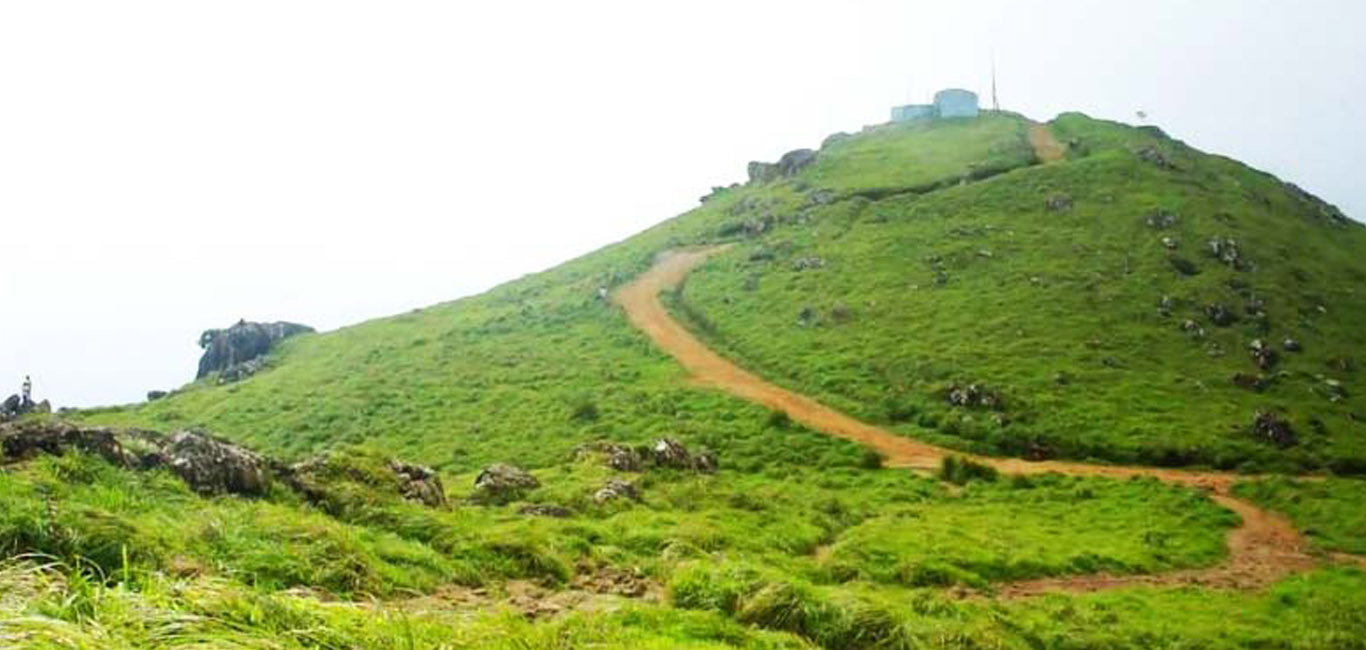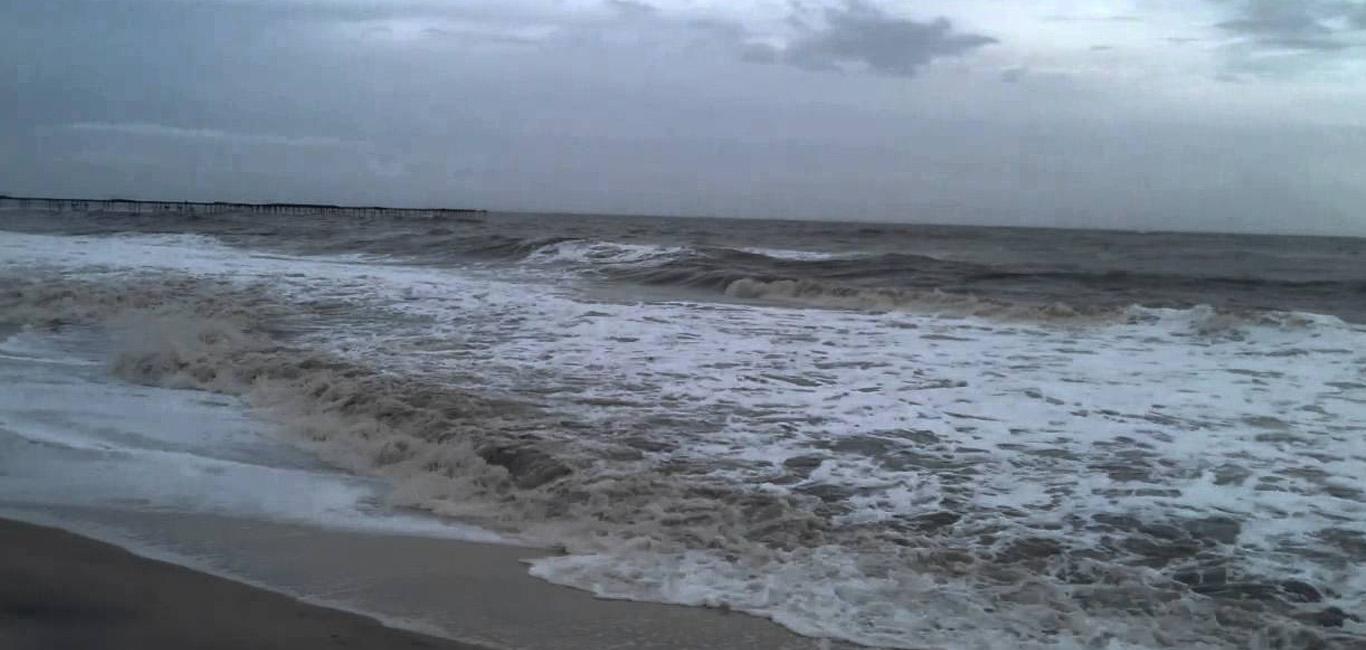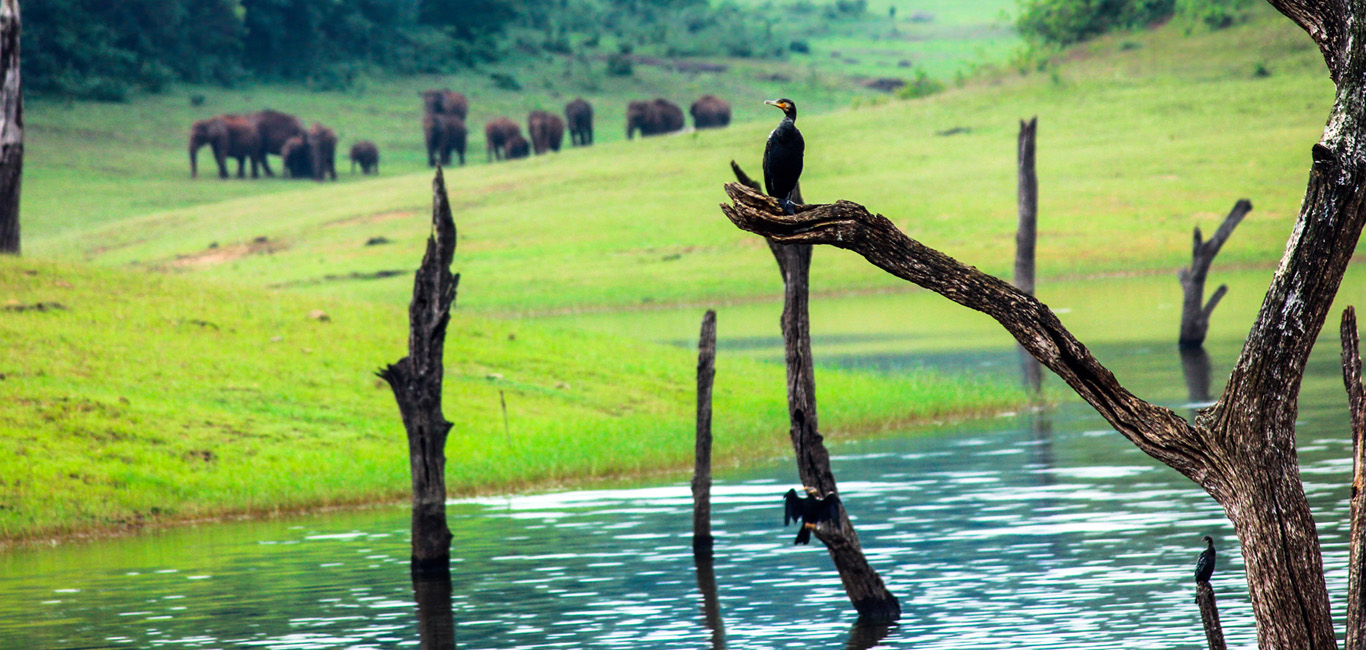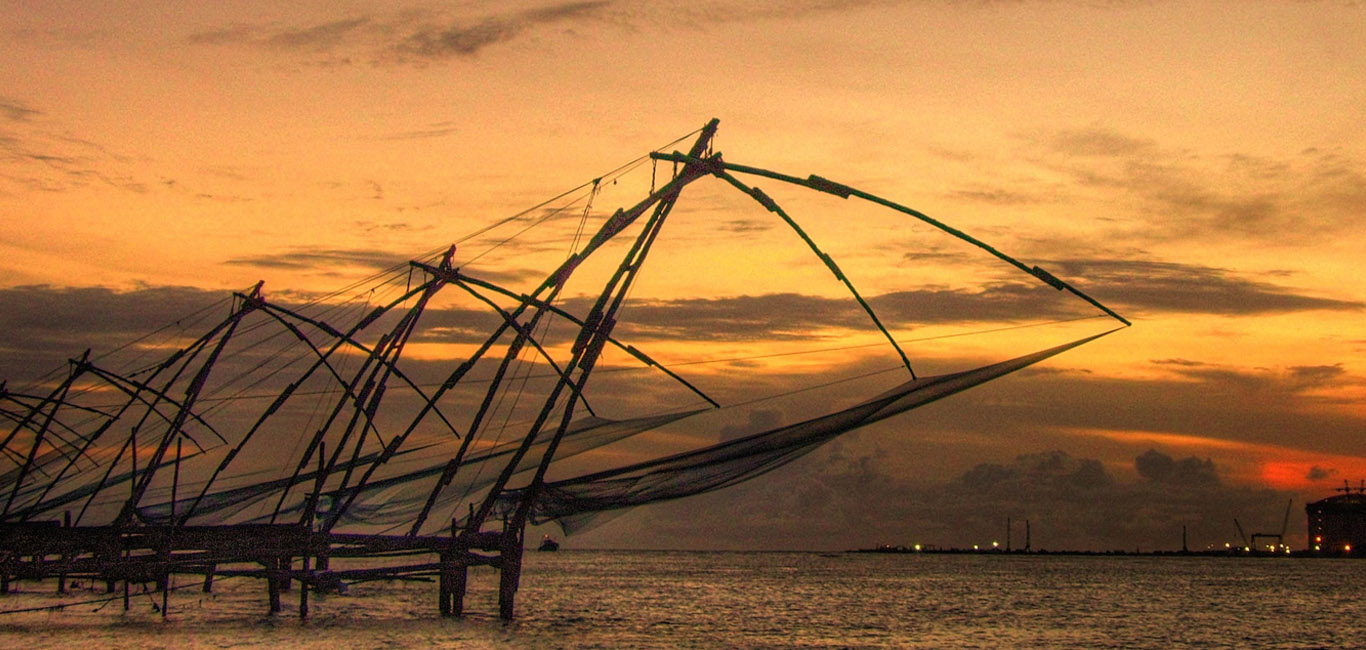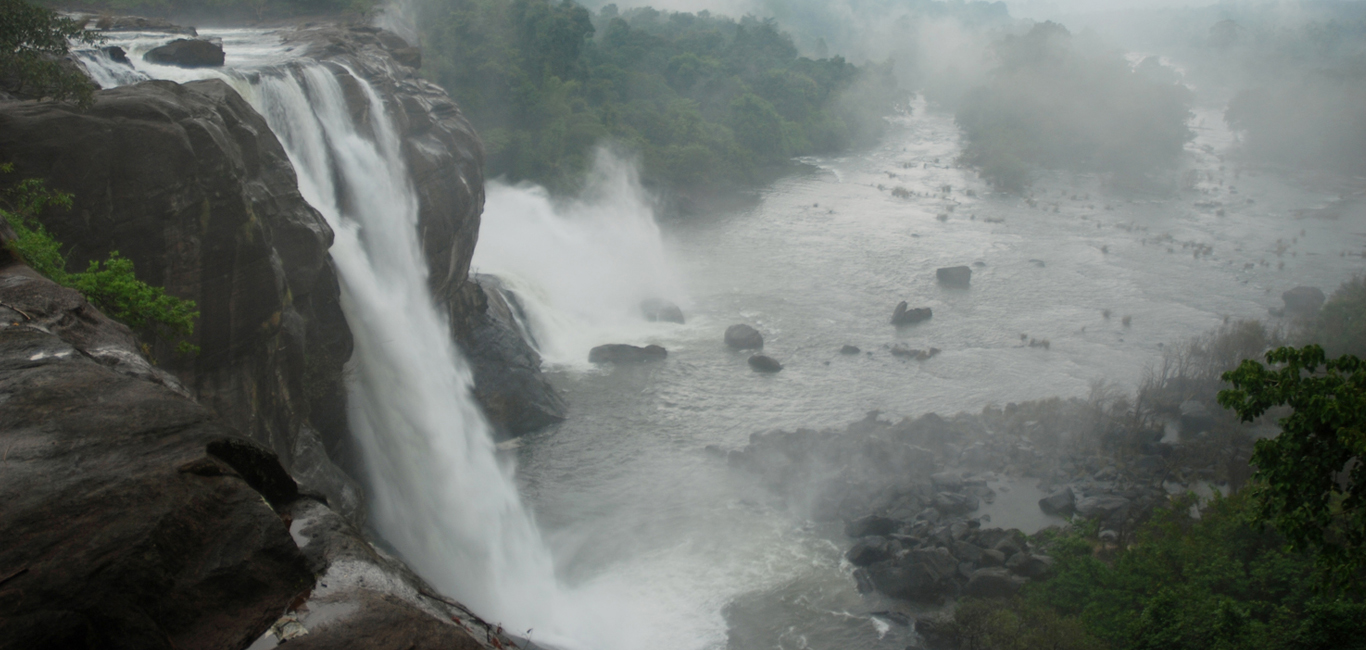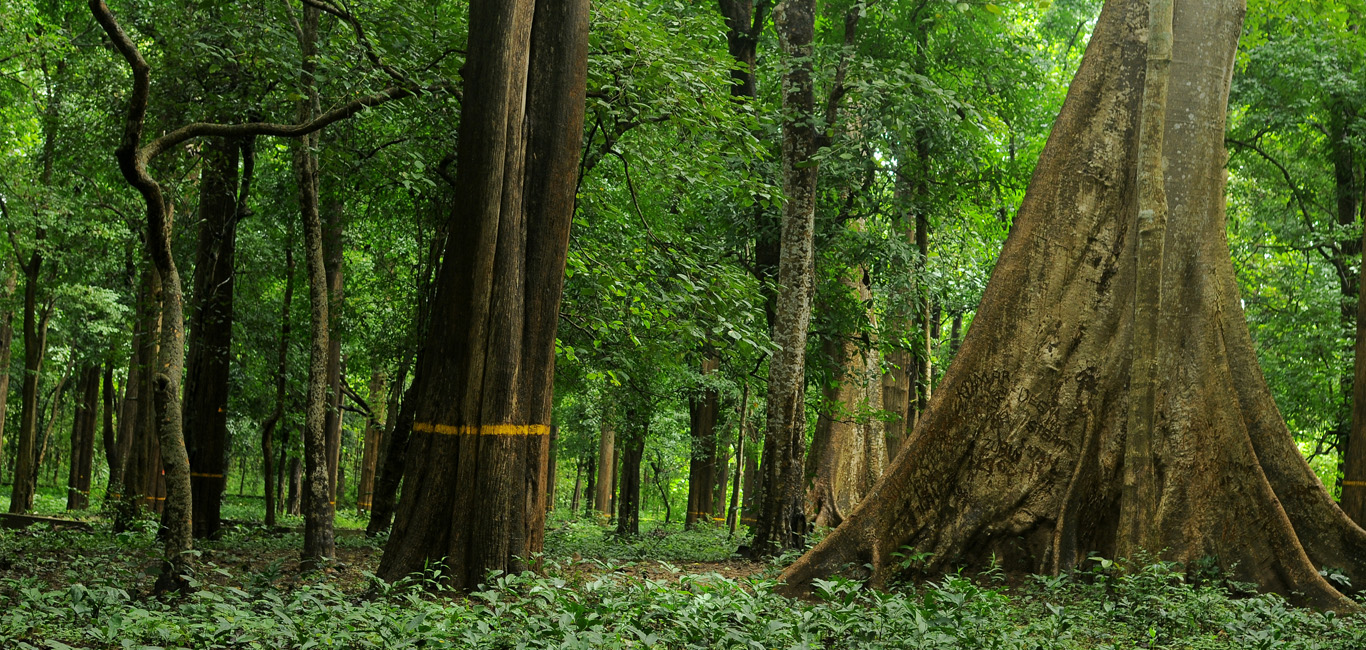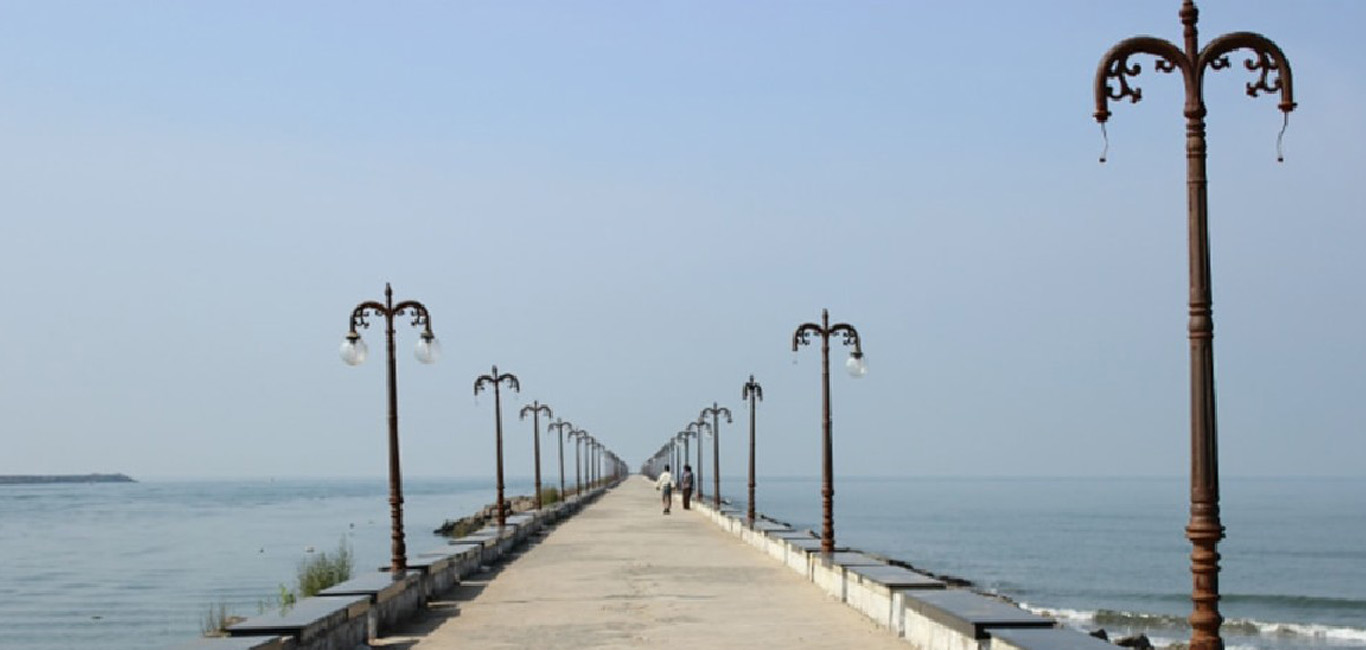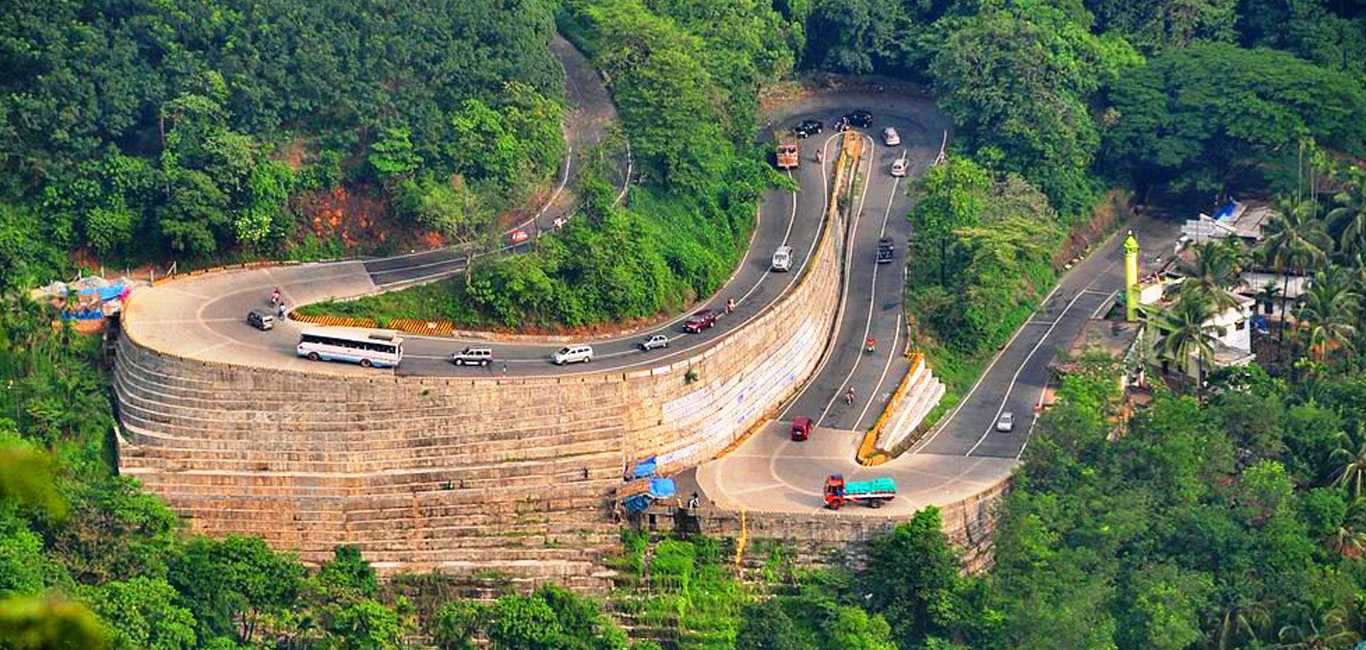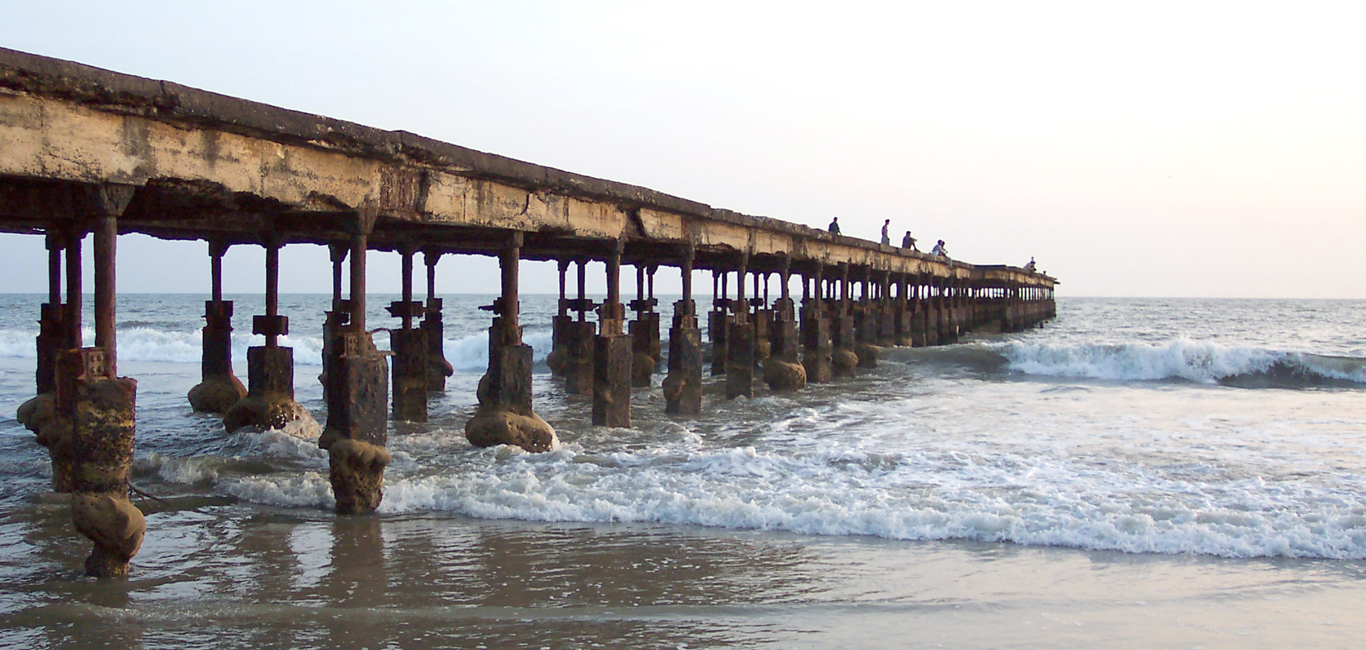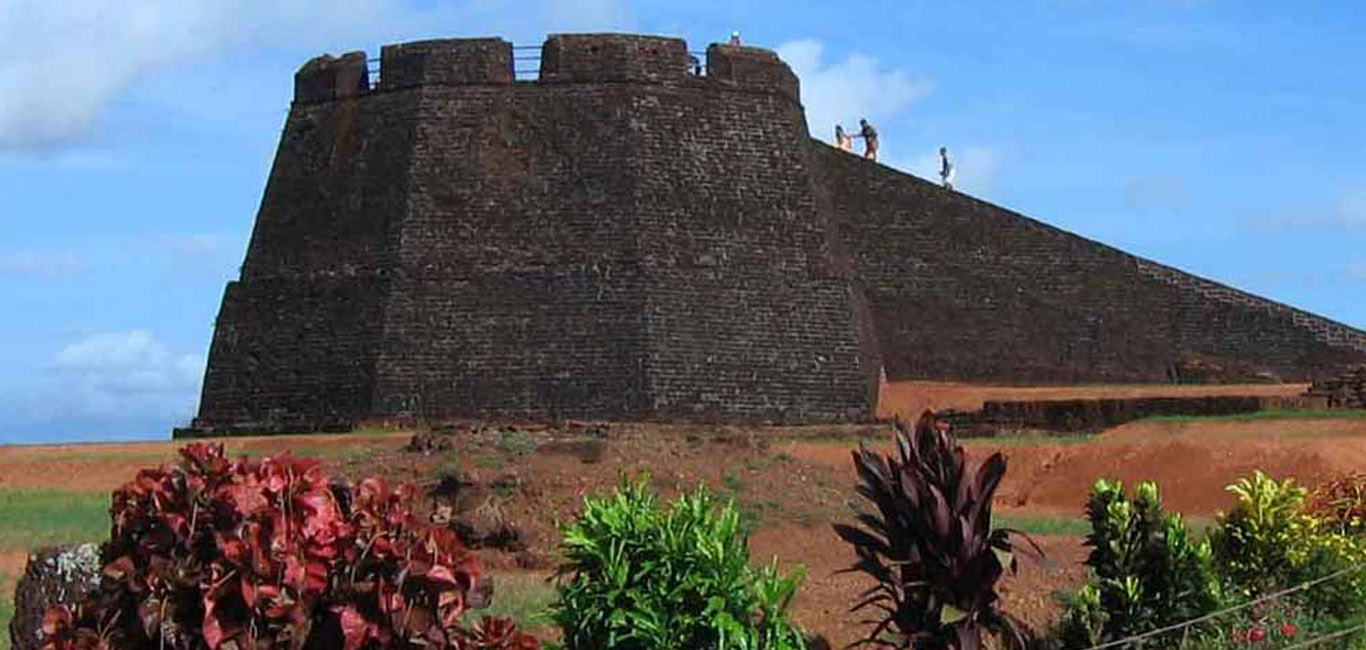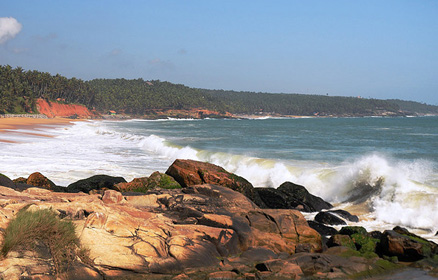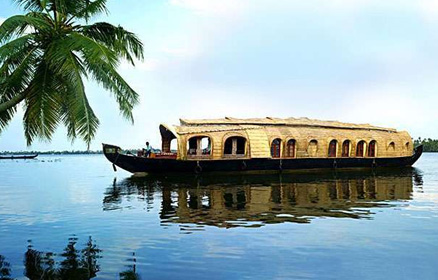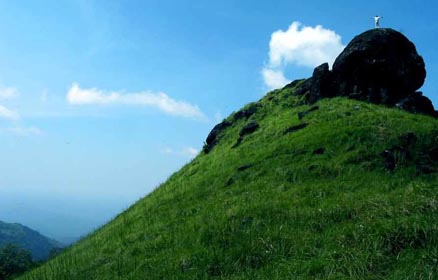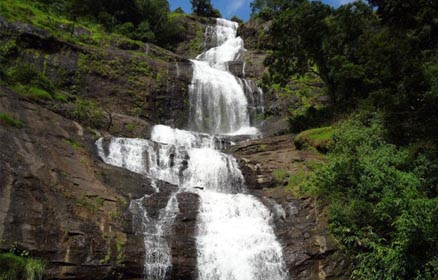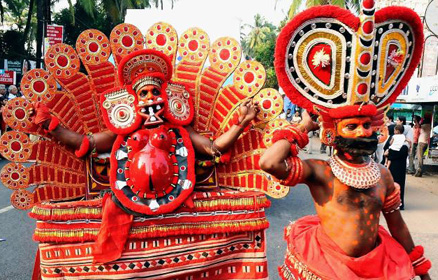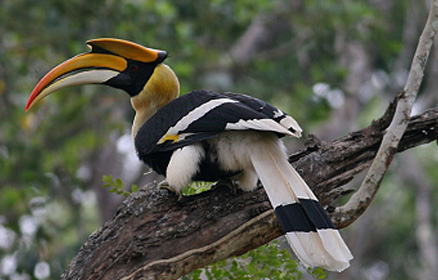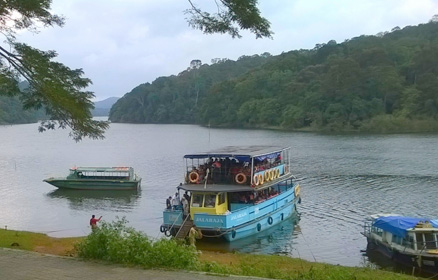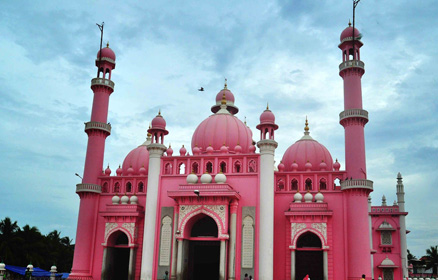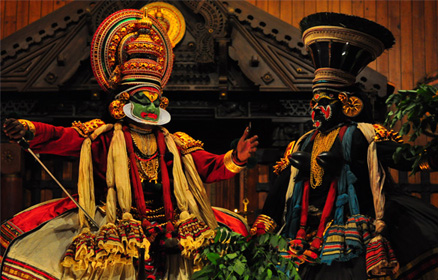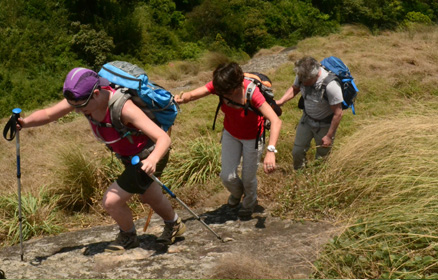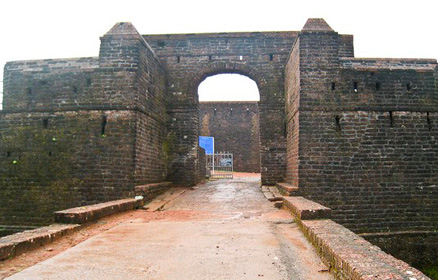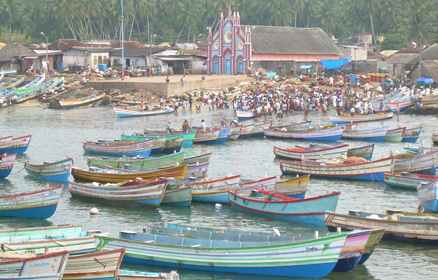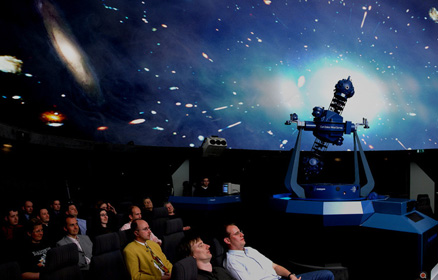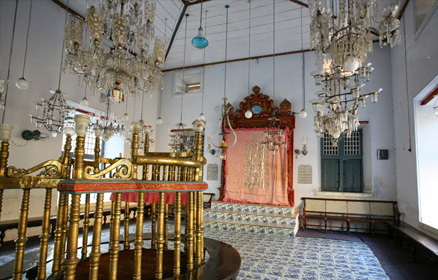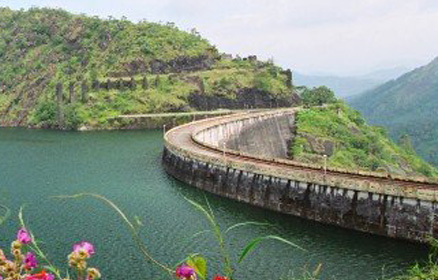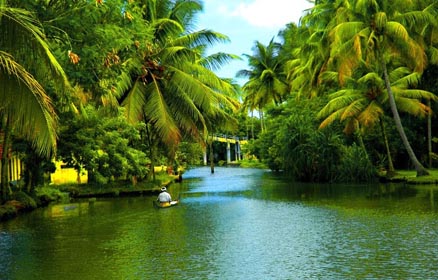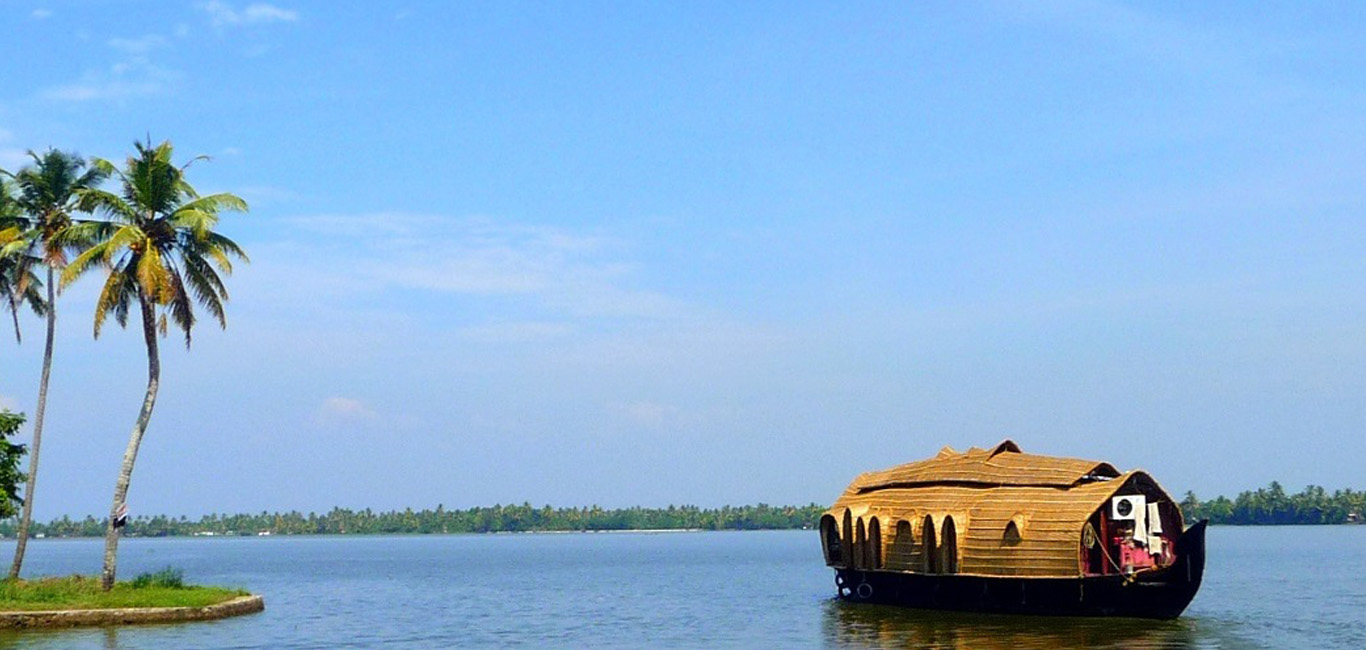
Kottayam
Acclaimed as the land of letters, latex and lakes, Kottayam has the distinction of being the first-ever fully literate municipal town in India. This land also boasts of the first English educational centre in South India as well as the first Malayalam printing press which was established by Benjamin Bailey, a Christian missionary, in 1820 AD. Today it is the forerunner in publishing with about 80 per cent of the books published in the State coming from the district. The nerve centre of Kerala’s newspaper industry, a total of five dailies are published from here. Panoramic backwater stretches, lush paddy fields, highlands and extensive rubber plantations characterize this picturesque land which attracts hordes of tourists. The majestic Vembanad Lake and the stunning backwaters of Kumarakom are its prime attractions.
How to Reach
Telephone access code : +91 – 481
Air: Nearest Airport Cochi (76km)
Thiruvananthapuram (160km)
Rail : The railway station is situated 2km from the central bus station and is connected to the major cities of India.
Road : An excellent network of roads connect the district to all major towns and cities of India
Backwater Ferry services : There are two ferry stations. The Town Jetty is about 3 km from the Railway station and operates services during the monsoon. During summer boat are operated from the Kodimatha Jetty.
Tourist Information Offices
District Tourism Office, Kottayam, Kumarakom and Tourist Information counter
Ph : 2524343, Email: keralatourismkumarakom@gmail.com
DTPC Ph : 2560420 www.dtpckottayam.com
Responsible Tourism Travel Desk, Kumarakom
Ph : 2524343, Mob : 9633992977
KTDC, Kumarakom Ph: 2525864
Place to Visit
Kumarakom
Accessing Kumarakom (From Kumarakom Boat Jetty)
- Kavanattinkara Boat Terminal-4 km, Kottayam Railway Station-13 km, Kottayam KSRTC Bus station 13 km, Kodimatha14 km, Vaikom 20 km, Alappuzha 39 km, Kochi-69 km, Nedumbassery Airport, Kochi 89 km, Thiruvananthapuram 172 km, Thanneermukkam-11 km.
- In and around Kumarakom
Vembanad Lake: (16 km west of Kottayam) Kottayam is a vast network of rivers and canals which empty into the great expanse of water called the Vembanad Lake. Vembanad is the second largest freshwater lake in South Asia and the largest in India. In this small water world, you’ll come across plenty of traditional country crafts, boats and canoes that will take you into the heart of this scenic lake. An enchanting picnic spot and a much sought-after backwater tourism destination, the lake provides boating, fishing and sightseeing experiences that are truly exhilarating. Stretching for 110 odd km and spanning three districts, the Vembanad Lake is at its widest point at Kumarakom. The serene lake comes alive during Onam with a spectacular water regatta- the snake boat races. The resorts at the picturesque Kumarakom Tourist Village offer comfortable accommodation and holiday packages that include houseboat cruises, Ayurvedic massages, yoga, meditation, boating, fishing, angling, swimming etc.
Kumarakom Bird Sanctuary: (16 km from Kottayam. Open 06.00-06.00 hrs) Located on the banks of the Vembanad Lake, the Kumarakom Bird Sanctuary, an ornithologist’s paradise, is a favourite haunt of migratory birds. June to August is the breeding season of resident wetland birds like Siberian stork, cormorants, darter, white ibis, egret, heron and teal. Between November and May is the season of migratory birds like pintailed duck, garganey teal, spot billed duck, osprey, marsh harrier, steppey eagle etc. A cruise along the Vembanad Lake is the best way to experience the sanctuary. Pathiramanal, an enchanting island in the lake, can be accessed by boat from here.
Aymanam (1.5 hour boat ride from Kumarakom): Arundhati Roy’s novel ‘The God of small things’ is set in this beautiful village. It is a typical water based village with scenic backwaters and a vivid green network of rivers and canals and vast stretches of green paddy fields and coconut farms. Migratory birds come seeking this verdant landscape every summer and frolic in its natural splendor. Country boat rides through the interior canals is a great way to relax and enjoy nature’s bounties.
Cheempumkal (1km from Kavanattinkara): The Public Water Transport Jetty and the House Boat Terminal are located here. Motor boat trips to Maniaparambu, Mannanam and Parippu are a memorable experience. Vast stretches of paddy fields, coconut fams, plantain farms and the village life of the local people can be seen here.
Daivathinte Munamb (7 km from Kumarakom): Daivathinte Munamb (God’s island), is an enchanting picnic spot which provides boating, fishing and sightseeing experiences. Walking along the banks of the lake is a memorable experience. Village life of the local people can be observed very closely here. The small island, a little far away from the main shore is fascinating and offers a beautiful view of the sunset.
Kaippuzhamuttu (2 km from Kavanattinkara Boat Terminal): Houseboat making units traditional coir making units, coconut processing centres, duck farms, paddy fields, migratory birds etc. are some of the attractions at this scenic place.
Kannadichal (3 km from Kumarakom): Various types of traditional fishing techniques can be seen in this village. During the harvest season, tones of paddy are harvested from this place. Migratory birds and common birds can be seen here. The one hour sightseeing trip through the winding canal in a country boat via Naragathara, Muthalymada, Mathrankayal to Daivathinte Munamb is an unforgettable experience.
Manchadikkari (4 km from the Boat Terminal at Kavanattinkara): Unending vast green paddy fields and vegetable farms, toddy tapping, net fishing, country boat rides, screw pine weaving, coconut leaf weaving, traditional coir making unit, duck farms and bird watching Manchadikkari has much in store for tourists. This place provides a truly unique village experience. In the summer season, migratory birds like the Siberian stork, darter, egret, heron and common varieties like water hen, crane, skylark etc. can be spotted here.
Mooleapadom (4 km from Kavanattinkara): The unique attraction here is the vellaveesal type of Karimeen fishing (a special technique of fishing using tender coconut leaves that are tied in ropes). Service of at least eight fishermen are required for this type of fish catching. A rie in a country boat through the narrow canal is a memorable experience. Vegetable farms, toddy tapping, coconut leaf thatched houses, bird watching etc. are the main attractions of this place.
Naragathara (8 km from the Boat Terminal at Kavanattinkara): This remote village is the place where the snake boat race trials are conducted during the festival season in the Malayalam month, Chingam. Winding narrow canals, vast stretch of paddy fields, vegetable farms, migratory and common birds are the other attractions here.
Attamangalam Church: The world famous Raja Ravi Varma paintings of Saint Parumala Thirumeni can be seen here. The canals around the church and the beautiful surroundings are the other interesting sights here.
BOAT RACES IN KUMARAKOM
Kumarakom Sreenarayana Jayanthi Boat Race: The boat races are conducted every year during Chathayam Nal, the fourth day of Onam. It starts from Kottathod near Kumarakom Market Junction. The procession in the Kettuvallam through Kottathodu is an attractive sight. Kolkali, Thiruvathira Kali, Garudanthookkam, Panchavadyam etc. are performed in the Kettuvallam during the procession. The boat races with all types of snake boats are held after the procession.
Kavanattinkara Tourism Boat Race: This boat race is conducted during Avittam day of the Malayalam month Chingam. Snake boats such as Iruttukuty, Chundan, Churulan, Veppu and Kothumpuvallam participate in the competition. Hundreds of people gather to witness this boat race.
Kottayam Thazhathangadi Boat Race: This is conducted during the last week of the Malayalam month of Chingam in the River Meenachil. The Chundan snake boat race is an important event. Vanchipattu competition, relay race etc. are conducted in connection with the boat race.
Special Attractions
Tour Packages
- A Day with the farmer : Kavanattinkara- Cheepumkal- Kaippuzhamuttu- Manchadikkari- Traditional Coir Making Unit- Duck Farm –Village Boating- Farm Fishing –Toddy Tapping- Coconut Leaf Weaving-Screw Pine Weaving- Vegetable Farm- Bird Watching- Village Life Experience-Backwater Trek- Guide Service/Lunch/Transportation etc., Tariff: Rs. 2,500/- Per head.
- Village Life Experience at Kumarakom : Kumarakom-Anganvady Visit- Weaving-Making of Miniature Snake Boats-Toddy Tapping-Karimeen Farm-Village Boat Ride-Bow and Arrow Fishing-Village Walking (Half Day Tour) Guide Service/Refreshments/ Transport etc. Tariff: Rs. 1,500/-per head.
- Trekking And Craft Boat Riding : Trekking on the bank of Kavanar and coming back by Country Boat (3=hrs), Kumarakom - Pallichira-Farm Visit-Riding on Craft Boat with Oarsmen (3 hrs.)
- Water Based Sightseeing Routes : Kumarakom
- Mooleapadom via Choolabhagam : Kumarakom Market junction- Boat Jetty- Vembanad Lake (Country Boat Ride 4 hrs. Motor Boat-2 hrs), Kumarakom Market Junction-Edavattom-Muthallymade via Daivathinte Munamb- R Block. (Motor Boat Ride- 3 hrs, Craft Boat-4 hrs) Kumarakom Boat Jetty- Kurushupalli-Kumarakom Lake Resort- Asarimattom Colony-Cocobay- Regional Agricultural Research Station- Taj Garden-Water Scapes-Birds Sanctuary-Kavanattinkara (Motor Boat- 3hrs.) Kavanattinkara-Vattakayal-Cheepumkal-Pallikkara-Coconut Lagoon - Kavanattinkara (Circular trip-2 hrs) Kavanattinkara- Vattakayal-Cheepumkal, Maniyapparambu- Mannanam (1 hr) Kavanattinkara-Vattakayal-Parippu (1 hr) Kavanattinkara-Kaippuzhamuttu-Manchadikkari (2 hrs), Kavanttinkara-Cheepumkal-Maniyaparambu-Perumthuruth –Mundar via Ezhumanthuruth (Motor Boat-2 hrs).
Road Based Sight Seeing Routes-Kumarakom
- Vechoor-Achan Road via Kallara-Ezhumanthuruth (1 hr) Kumarakom Market Junction-Nazarathpally-Konchumada-Nalupank- Daivathinte Munamb (Evening Tour- 3 hrs).
Ferry Timings: Kottayam-Kodimatha to Alappuzha (2 ½ hrs)- 06.45 hrs, 11.30hrs, 01.00 hrs, 03.30 hrs, 05.30 hrs, Kumarakom Boat Jetty To Muhamma-frequent ferry services from 0630 hrs to 2000 hrs. Cheepumkal via Maniyaparambu to Mannanam. 06.20 hrs, 08.00 hrs, 12.00 hrs, 02.15 hrs, 04.45 hrs, 06.15 hrs.
Unique Festivals: Erumeli Petta Thullal (January) Athirampuzha Nercha and Kazhunnu Pratakshinam (January) Kappalottam at Kuravilangad St. Mary’s Church (January) Ezharaponnana Ezhunallathu at Ettumanoor temple (Feb/March) Attuvela at Elankavu Bhagavathi Temple at Vadayar near Vaikom (March/April) Tiyyattu performance at Pallippurathukavu in Kottayam town (April) Garudanthookam/Parava at Manarcad and Kudamalloor Temples (April) Padayani at Alapra Thacharikkal Bhagavathy Temple (April) Pakkil Sankranthi Vanibham (display of household articles) (June/July) Ettunompu at Manarcad St. Mary’s Church (September) Pooram Padayani at Neelamperoor Palli Bhagavathy Temple (display of swans) (September) Navarathri Festival at Panachikkadu Saraswathi Temple (October) Ashtami Festival at Vaikom Temple (December) Zodiac Worship at Sun Temple at Adithyapuram near Kaduthuruthy and Malliyur Temple (only one in Kerala) (November/December/April)
- : (45 km Southeast of Kottayam) Located near to Erumeli, Alapra is surrounded by the Ponthanpuzha forest. The Alapra Thacharikkal Bhagavathi Temple located amidst the forest is the only place in the district where Padayani is performed. Stunning views, spectacular waterfalls, mysterious caves and muniyaras add to the natural attraction of the landscape.
- (22 km from Kottayam) This stone lamp post, a typical example of Kerala architecture, was built near the Changanacherry boat jetty by the renowned freedom fighter Veluthampi Dalawa. The Changanacherry market, one of the largest in Kerala, was also established by him. The five lamps on this post are lit using kerosene.
Aruvikuzhy Waterfalls (22 km from Kottayam): Aruvikuzhi is a beautiful picnic spot and an ideal shooting location for movies. Aruvikuzhy Waterfalls, falling in five steps, is a real feast for the eyes. Here streams make their way through the landscape and the water roars as it cascades down the mountains from a height of 100 ft. It is an ideal place for trekking and is located in the midst of rubber plantations. The famous St. Mary’s Church situated at the top of the waterfalls. The rubber plantation centre, Pallickathod, is just 1km from this spot.
- (60 km northeast of Kottayam) Nestled in the lush green Western Ghats is this nature-rich village. This is also the entrance point to South India’s most prominent pilgrim centre-the Sabarimala Temple. At Kanakapalam nearby, teak plantations dot the landscape.
Illickal Mala: Numerous mountain sreams in this peak, 6,000 ft above sea level, flow down to form the serene Meenachil River. Tourists have to trek 3 km to reach the top of the hill. And if you so wish, you could even spend the night there.
Illickal Kallu: Three hills, each rising to 4,000 ft and above, together form this huge hill. Each of these hill have a peculiar shape. One of them resembles a mushroom owing to which it gets its name Kuda Kallu (umbrella shaped rock). The medicinal herb Neela Koduveli, which bathes the hillsides in blue, grows here. This flower is also believed to posses supernatural powers which could increase wealth and ensure a rich harvest. The second hill, has a small hunch on the sides and is therefore referred to as Koonu Kallu (hunchback rock). Across this rock is a ½ feet wide bridge called Narakapalam (bridge to hell). From the hilltops, the Arabian Sea can be seen in the distant horizon as a thin blue line. The sunset on a full moon day is sensational, when the moon can be seen rising up like another sun, as the orange sun goes down.
Ithipuzha: (40 km from Kottayam) Endless stretches of coconut palms and vast acres of emerald green paddy fields make this quaint village picture-perfect. Located on the Ernakulam-Vaikom Main Road, tourists can traverse the river flowing through here on canoes and take in the scenic splendour.
Kayyoor, Bharananganam: An enchanting landscape is formed by a chain of green hills at the Bharananganam panchayat. A shrine dedicated to the Pandava brothers of the epic Mahabharatha is found here. As in the famous temple at Sabarimala, only ghee is used to light the lamps here. Women are not permitted inside the temple.
Ayyampara Hill: According to legends, the five Pandava brothers-epic heroes of the Mahabharatha-stayed near this rock, 2,000 ft above sea level and spread over 20 acres, during their exile. The name of the rock is said to be a modified version of the original term Anchupara (five rocks). However, some say that the name owes its origin to the Ayyampara Temple here. This temple has four pillars which support a flat piece of rock that forms the roof. On one side of the rock is a cave that can accommodate over 15 people. The sunset beautiful from here.
Kannadipara: As the name suggests, the valley of this rocky mountain reflects the morning sun with a mirror-like perfection. This is also the highest point in llaveezhapoonchira. 3 km from here is the Pazhakakanam Plateau nourished by the Kadapuzha River. Bamboo groves, meadows and wild flowers make this place exotic. An added attraction here is the Kazhukankulimali Waterfalls. On the eastern side of Kannadipara is a natural fort set amidst steep rocks.
Kallara: Easily accessible from Kumarakom Kallara situated to the northwest of Kottayam, is the centre of the screw pine mat-making industry. Criss-crossed by an intricate network of canals and waterways, the Vellasseri paddy fields near Appanchira and the backwaters of Ezhumanthuruth are the major attractions of this region.
Kottathavalam: Near Murugan Hills at Kurisumala, a flight of steps cut into the rocks takes one to this magnificent cave. Legends say that the royal family from Madurai rested here on their way to Poonjar. The rocks within the cave, carved like chairs and couches and the figures of Madurai Meenakshi, Ayyappa, Murugan, Kannaki and weapons sculpted on them, are all worth exploring.
Karimbukayam-Meloram: This quaint spot on the Manimala River that flows between the Kanjirapally (a plantation town) and Erumeli Panchayats, much sought-after for its natural splendours, is also extremely popular for the exotic water fiestas held on the reservoirs occasionally.
Kolani Mudi: Yet another peak in the llaveezhapoonchira mountain range, Kolani Mudi also has a cave.
Marmala Stream: This scenic stream and its breathtaking waterfalls are together referred to as the enchantress of the jungle. Sliding down numerous hillocks from a height of 200 ft, the gushing water has etched out over the years a deep pond in the rocks. A natural bridge runs right over the waterfalls.
Manimala (40 km from Kottayam): The scenic atmosphere, pretty cascades and small streams offering stunning views add symphony to this village. The River Manimala is an important waterway of Central Travancore. Rising in the hills of the Kottayam-Idukki ranges, the river flows through the midland plains, joins with the Pampa River and drains into the mighty Vembanad lake. The Padayani Grammam Alapra is located near Manimala Junction. The river offers a beautiful view at this sport and flows swiftly, striking against the many rocks in the river.
Muruganmala: On the eastern side of the Kurisumala Hill is Muruganmala, housing a rock cut temple dedicated to Lord Murugan (son of Lord Shiva). The road offers sightseeing opportunities in a European model house and a beautiful artificial lake, both designed by the renowned architect, the late Laurie Baker.
Maniyamkunnu: The majestic mountains here that slope down to meet the beautiful valleys below are truly spellbinding.
Mankallu Mudikal: The three hills in this region lie close to each other, their flat hilltops covered with lush grasslands. An aerial view of these resemble a traditional clay oven. With no trees around, the hilltops give you the feeling that you are walking in the clouds.
Mannanam: (11km from Kottayam) Besides being associated with the Blessed Father Kuriakose Elias Chavara, Mannanam is the seat of the first seminary of the Malabar Church (1833), the first Catholic Sanskrit School in Kerala (1846), the first private printing press (CMS Press started by Rev. Benjamin Bailey in 1846), and the first daily newspaper in Malayalam, the Deepika (1887). A brilliant repertory of church history is preserved at the Chavara Art Museum. An enchanting boat journey through the Pennar Canal to the picturesque backwater districts of Alappuzha and Ernakulam is provided by DTPC and accommodation is available at the Mannanam DTPC Tourist Home.
Melaruvithodu: The natural reservoirs and waterfalls at Melaruvithodu on the Ernakulam - Thekkady road are the main attractions here.
Nadukani: This is a picturesque location at the top of a hill with endless stretches of meadows girded by huge rocks. A birds-eye view of the surrounding low lying places can be enjoyed from here.
Nattakom and Panachikad: (5 km south of Kottayam) Adding to the charm of these quiet village are their scenic reservoirs. Migratory birds come seeking this verdant landscape every summer. A boat ride from Kodoorar in Panachikad to Kumarakom is a great way to relax and enjoy nature’s bounties. Facilities here cater to the recreational needs of tourists and range from soothing Ayurvedic messages to boating, fishing and swimming.
Poonjar Palace: The palace is a glorious testimony to the regal opulence of a bygone era. Within the palace walls is an extraordinary royal collection of antiques and exquisite furniture which include a palanquin, a thoni-carved out of a single piece of wood-for Ayurvedic massages, huge chandeliers, palm leaf engravings, jewel boxes, different varieties of lamps, sculptures of Nataraja (dancing Lord Shiva), grain measures, statues and weapons. A unique conch preserved here is taken out once a year for ritualistic purposes. Near the palace is an amazing replica of the Madurai Meenakshi Temple. The walls of this temple bear sculptures which narrate stories from the Puranas (the legends of ancient India). However, the most fascinating thing here is the Chuttuvilakku (row of lamps) carved out on stone walls of the Sastha Temple nearby. Such rock cut lamps are rare in India.
Pala and Kanjirapally: Nourished by the Meenachil and Manimala rivers respectively, these two towns are centres of rubber plantations.
Ramapuram: Located 15=km from Pala Town on the way to Koothattukulam, Ramapuram is unique as it houses the temples of Rama as well as his three brothers in a radius of just three kilometers. It is also the birthplace of Ramapurath Warrier, originator of the Vanchipattu and place where Lalithambika Antharjanam, the renowned Malayalam novelist lived.
St.Thomas Mount: This holy place of Christians is located 1,200 ft above sea level and offers a panoramic view of the Vaikom Lake and its surroundings.
Thazhathangadi: Once the most important place in Kottayam, Thazhathangadi, by the River Meenachil and with the Vembanad Lake not far off, was strategically vital for trade. A quiet town today, it still flaunts the sprawling houses build by the merchants of yore. Made largely of wood, these houses are excellent examples of the architecture of the time.
Tourist Land, Vaikom: This is a quaint picnic spot ideal for a languorous break. Tourists can avail of various recreation options including boat cruises on the Vaikom Lake.
Vyaskara and Chirattamon: These places are well-known for their Ayurvedic rejuvenation centres that practice authentic Ayurveda that has been passed down as a tradition among the families here. Another speciality is the use of only self-made medicines in their treatment regimes.
Vadakkel Convention Centre (22 km from Kottayam): Poovathilappu Vadakkel Convention Centre is also a beautiful picnic spot and a shooting location for movies. Big models of dinosaurs, snakes, bears etc., fountains, flower gardens and an ISO approved flower nursery are the main attractions here.
Vazhikkadavu: On the outskirts of the district is this hill station of rocky terrains sought after- for its pristine nature. On one side of the main rock are extremely tall and steep rocks and on the other is a valley of fearful depth. Bordering this crude landscape like a silver lace is the Meenachil River. During the months of December/January, the landscape comes alive in a riot of colours with orchids and wild flowers.
Places of Worship
Aruvithira Church: (11km from Kottayam) Believed to be one of the seven churches established by St. Thomas, this is also one of the churches in Kerala which collects the largest amount of monetary offerings during the festival days. The annual feast is celebrated from 22nd to 24th of April.
Bhagavathy Temple, Ambalakkadavu: The Arattu ritual of the Thirunakkara Mahadevar Temple takes place here. Festival: Vishu (April/May)
Bhagavathy Temple, Manarcad: This centuries-old temple is dedicated to goddess Bhadrakali. Main events: Kalamezhuthupattu, Kumbha bharani, Meena bharani, Patham udayam, Mandalam chirappu.
Dharmasastha Temple, Pakkil: (3 km from Kottayam) This is one of the eight temples established by Parasurama, the legendary founder of Kerala. Annual festival: Sankranti Vanibhyam- a fair of household articles (June/July)
Juma Masjid, Thazhathangadi: (2 km from Kottayam, Open 07.00-06.00 hrs) This ancient mosque on the banks of the Meenachil River is believed to be 1,000 years old. It is one of the oldest in India. The mosque has a square inner courtyard, an exquisitely carved wooden gabled roof, a traditional bathing area and lovely latticed windows making it resemble a temple or a king’s palace. Only men are allowed here.
Kaduthuruthi Valiapalli: (On MC Road between Ettumanoor and Vaikom) Built in 500 AD, the church has a huge cross sculpted out of a single stone at the entrance.
Kalkulathukavu Temple, Vazhappalli: This temple is famous for its Mudiyeduppu Utsavam (festival) celebrated once in 12 years and the rare art form connected with it. The procession carrying madhu (honey), Kulavazha (plantain tree with the fruit), bhairavi purapadu and darika vadha purappadu etc. is a grand affair.
Kavil Bhagavathy Temple, Changanacherry: (18 km from Kottayam) Built by one of the Thekkumkoor Maharajas. Festival : Kavil chirappu (Dec.Jan.)
Kurishumala: (3 km from Vazhikkadavu) At this renowned Christian pilgrim centre, hundreds of devotees from far and near converge during the holy week and after, to climb the hill in faith, carrying small wooden crosses.
Mahadevar Temple, Ettumanoor: (12 km north of Kottayam) This temple is famous for its murals, especially the painting of Nataraja in the gopuram and Ezharaponnana (the 7½ elephants finished in gold), Festival: Ezharaponnana ezhunallathu (10 days in February/March)
Pallipurathukavu: Festival: Patham udaya mahotsavam. Famous ritual offering: Nadel Thiyattu performance.
Pazhayapalli, Changancherry: (21 km from Kottayam) This 950-year-old mosque is one of the most famous ones of Central Travancore. The annual festival, Thangal adiyanthiram, is renowned and is marked by a grand community feast. Meat and two tonnes of rice, offered by the devotees, is used to prepare biriyani for the community feast on this day. The Chandanakkudam festival at the mosque is one of the largest crowd pulling events in Changanacherry town.
Puthenpalli, Erattupetta: The famous Chandanakkudam festival is celebrated here in February/ December.
Saraswathi Temple, Panachikkad: (13 km en route to Changanacherry. Open 05.00-10.30 hrs, 05.00-07.30 hrs) This temple, also known as the Mookambika Temple of the South, hold the Saraswathi (goddess of learning and the arts) pooja every year in October/November. Children are initiated into the world of letters at the Vidhyarambham ceremony held here.
Siva Temple, Thalikkotta: (2 km from Kottayam) This is the place of worship of the erstwhile Thekkumkoor Royal family. Annual festival: Ten-day utsavam (April-May). Sivarathri (January-February).
Siva Temple, Vaikom: (40 km from Kottayam) Associated with the legendary Parasurama, this temple is a typical example of the Kerala style of temple architecture. More popular as the Kasi of the South, this temple is famous for its elephant pageants and traditional art performances. Annual festival: Vaikathashtami (November / December.
Sree Subramanya Swami Temple, Perunna: (20 km from Kottayam) Festival: Pallivetta utsavam (November/ December)
St. George’s Church, Puthupalli: This church is believed to have been built by the Thekkumkoor Rajas. The golden cross in this church is well known. The feast of St. George (Gee Varghese) is the annual event.
St. Mary’s Forane Church, Athirampuzha: (10 km from Kottayam. Open 09.30-01.00 hrs. 03.30-06.00 hrs) The 9th century St. Mary’s Church was built on land donated by the Brahmin family of Ettanasseri as thanksgiving for a male heir born to the family on praying to Virgin Mary. Leonard D’Cruz, a Portuguese sailor, brought the statue of St. Sebastian in 1687. The crucifix in this church is unique as it shows Jesus Christ without a single wound. The annual feast celebrated in honour of St. Sebastian is a big event with fireworks and illuminations. Votive offerings of gold and silver arrows set this event apart from other festivals.
St. Mary’s Church, Bharananganam: (38 km from Kottayam) The mortal remains of St. Alphonsa is entombed at this church, which is now a famous pilgrim centre. Thousands gather at this holy shrine every year during the feast. Annual festival: Feast of the Blessed Alphonsa (July).
St. Mary’s Church, Kudamaloor: This church, 800 year old, was built by Chempakasseri Maharajah. The ritual offering here is a traditional water bag and rope used to draw water from the well. The Kudamaloor Temple is equally famous.
St. Mary’s Church, Kuravilangad: Built in 355 AD on the high ranges of Kuravilangad Town, this church has an old bell which bears an undeciphered inscription.
St. Mary’s Church, Manarcad: (8 km from Kottayam Town) This is one of the most important churches of the Malankara Jacobite Syrian Christians. The ettunompu (8-days fasting) is the main annual event when devotees from far and wide congregate to participate in the prayers and rituals.
St. Mary’s Knanaya Church, Valiapalli: (2 km to the west of Kottayam. Open 08.00-08.00 hrs) Built in 1550 AD, this church belongs to the Knanaya Orthodox Syrian Community. The Persian cross, believed to be one of the seven brought here by St. Thomas, and the Pahlavi inscriptions of this church are famous. St. George’s Feast falls on April 24. Ph: 0481-2563324.
St. Mary’s Orthodox Church, Cheriapalli: (2 km from Kottayam. Open 08000-06.00- hrs) Built in 1579 by Thekkumkoor Maharajah, this church displays outstanding architecture which is a blend of Kerala and Portuguese styles. The walls are adorned with beautiful murals made in oriental and western styles on biblical and non-biblical themes. Feast Day: Jan. 15. Ph: 2566744
St. Thomas Church, Cherpungal: Believed to have been established by the apostle St. Thomas, this church was relocated to the southern banks of the Meenachil River with the cooperation of poet Kunchan Nambiar and his family. In 1107, the Valiapalli was built on the original site. Oil poured into lamps and kept before the image of Infant Jesus is the votive offering here- a ritual similar to the devotional practices of Hindus.
Surya Temple, Adityapuram: The only temple in Kerala dedicated to Aditya, the sun god. The first and last Sundays of the zodiacs, Scorpio (November- December) and Aries (April- May), are considered auspicious.
The CSI Cathedral Church: Built over 175 years ago, the church is a monument from the British Era.
Thirunakkara Mahadevar Temple: (Open 04.00-11.00 hrs, 05.00-08.00 hrs) In the heart of Kottayam town is this 500 year old temple built by the Thekkumkoor Maharajah. This temple built in the Kerala style of architecture has colourful murals on its walls which are worth seeing. The Koothambalam, the special building in the temple premises used for cultural purposes, is one of the best in Kerala. Camera fee: Rs. 50, Video Rs. 100. Ph: 2583898
Vimalagiri Church: This Church built in the Gothic architectural style has a 172 ft tower which is one of the tallest church towers in Kerala. The feast is celebrated in December.
Vavarambalam, Erumeli: This mosque is dedicated to Vavar, a companion of the deity-Sree Ayyappa-of the Sabarimala Temple. The mosque is unique because Hindu pilgrims customarily worship here before their trek to Sabarimala. Festival: Petta thullal (January).
Vennimala: (15 km from Kottayam) Easily accessible from the Kottayam-Kumili Road, Vennimala has a century-old Rama Temple which stands testimony to the myth that Lord Rama visited this place during his exile. The remains of a palace, a cave etc. are the other attractions. Near Vennimala, is the Aruvikkuzhi Waterfalls and Mathrumala Temple.
